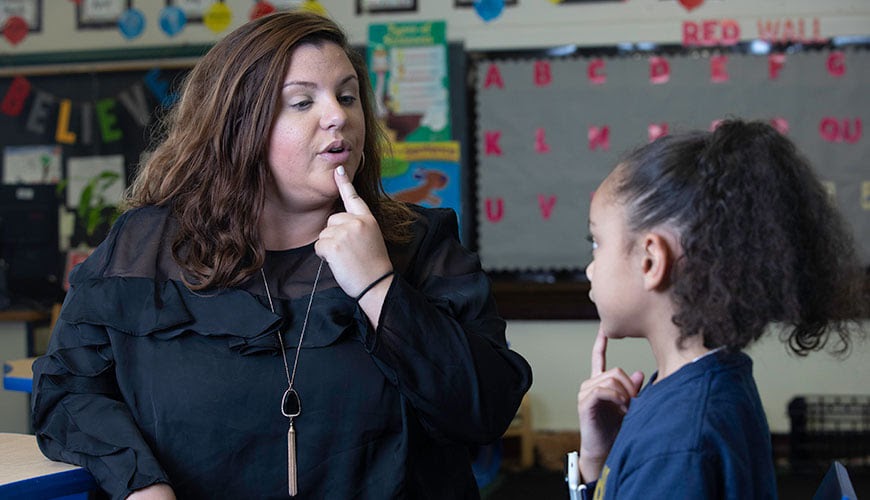Creating a More Just and Merciful World
Becoming a Bilingual Speech Language Pathologist

There is a growing need for speech-language pathologists fluent in languages other than English.
This comes as no surprise considering a record 67.3 million U.S. residents spoke a language other than English at home, according to 2018 U.S. Census Bureau data. The number has more than doubled since 1990 and almost tripled since 1980.
Schools, the largest single sector in which speech-language pathologists are employed, are especially experiencing an increase in demand. The National Center for Education Statistics reports that the number of students who are English language learners in American schools increased by 300,000 between 2004 and 2014.
Unique Challenges of English Learners
English language learners face particular challenges that speech-language pathologists can help them with.
The language acquisition patterns of bilingual and multilingual children are not necessarily the same as those among monolingual groups. Children aged 3 and younger tend to not differentiate between multiple languages when they are learning them simultaneously. For example, they might say words and language structures interchangeably, which can create challenges when assessing their actual abilities.
There are characteristics that speech-language pathologists can identify to determine impediments among non-English speakers, including inability to produce bilabial sounds, slow word acquisition, mutism and echolalia (repeating what someone else has said).
Techniques and Resources that Assist Speech-Language Pathologists
Speech-language pathologists use the same technology, devices and techniques with English learners as they would with native English speakers. The desired outcomes are the same.
The delivery of services, however, vary with cultural- and language-specific customization. Speech-language pathologists must consider cultural factors. This knowledge is incorporated into practice areas including assessment, diagnosis and treatment. Schools rely on speech-language pathologists to create linguistically and culturally appropriate learning plans for students.
The American Speech-Language-Hearing Association (ASHA), a professional association for speech-language pathologists, audiologists, and speech, language and hearing scientists, has several skill requirements for bilingual speech pathology professionals, including:
- Near-native proficiency in a second language
- Ability to diagnose and treat bilingual speech disorders
- Understand communication difference vs communication disorder
- The “silent period” when children are learning a second language and they can understand much more than they can put into words
- Codeswitching—switching between languages within a sentence or phrase
Skills in Demand
Being proficient in multiple languages offers several opportunities. Language skills are more sought after now than ever. Speech language pathologists with knowledge of multiple languages are viewed favorably by employers because of the communication and problem-solving skills honed from their experience in developing another language.
These professionals have also proven they have the ability to immerse themselves in other cultures and overcome associated challenges associated with that. Cultural awareness, open-mindedness and collaboration are desirable professional skills.
A Career in Speech-Language Pathology
Carlow University offers a pathway to becoming a Speech-Language Pathologist through its three-year BS in Health Sciences: Pre-Speech-Language Pathology major.
